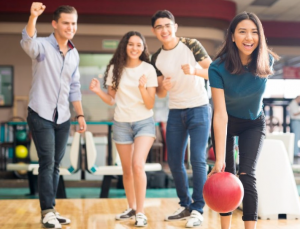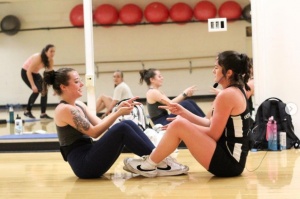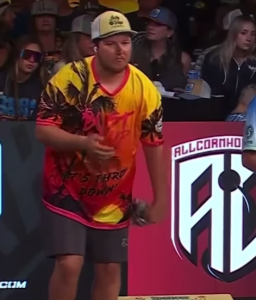From Campus to Adulthood: The Evolution of Sports and Fitness Preferences
8 min read
The transition from college to adulthood is a significant life change. Along with newfound independence and responsibilities, one’s lifestyle, including choices related to sports and fitness, tends to evolve. In this comprehensive guide, we’ll delve into the most popular college intramural sports and fitness activities and compare them to the preferences of post-college adults. We’ll explore the reasons behind these choices, answering questions such as: Why do college students engage in intramural sports and fitness? Why do adults continue to participate in sports and fitness activities after college? And what motivates individuals to maintain a commitment to sports and fitness throughout their lives?
Let’s embark on this journey to understand the dynamic relationship between sports, fitness, and the different stages of life.
College Intramural Sports and Fitness
The Popularity of College Intramurals
1. Basketball: Where the Bouncing Begins
Basketball takes center stage in many college intramural programs. The sport’s popularity among college students can be attributed to its accessibility, minimal equipment requirements, and the availability of indoor facilities on campuses. It’s a game that fosters camaraderie and competition, making it a go-to choice for many.
2. Soccer: The World’s Game on Campus
Soccer, or football for our international readers, is another intramural favorite. With just a ball and an open field, college students can easily organize matches. Its global appeal and simple setup make it an ideal choice for recreational play on campus.
3. Flag Football: Tackling Without the Tackle
For those looking for a less physically demanding alternative to tackle football, flag football fits the bill. Its inclusivity and lower risk of injuries make it a popular choice among college students of various skill levels.
4. Volleyball: Spike, Serve, Score
Volleyball’s versatility, playable both indoors and outdoors, attracts college students seeking an active yet less physically taxing sport. The simplicity of the game and the need for teamwork make it a hit in intramural leagues.
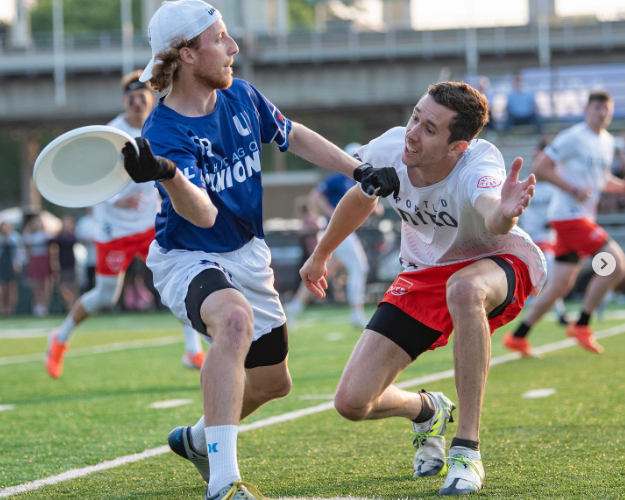
Fitness Beyond the Field
1. Running Clubs: The Joy of the Open Road
Many college campuses host running clubs or groups that organize group runs, races, and other fitness activities. This promotes physical wellness and provides students with a sense of community while staying fit.
2. Ultimate Frisbee: Soaring Fun on the Quad
Ultimate Frisbee combines athleticism with a sense of camaraderie. It’s fast-paced, requires minimal equipment, and has a low barrier to entry, making it a favorite among college students looking for an exciting team sport. New to Ultimate Frisbee? Be sure to check out our blog Beginner’s Guide to Ultimate Frisbee Hand Grips and Catching Techniques.
3. Yoga and Group Fitness Classes: Balancing Body and Mind
To cater to a holistic approach to health and fitness, college fitness centers offer yoga, spin classes, and various group fitness activities. These classes help students manage stress and maintain physical well-being.
4. Intramural Leagues: Traditional Sports
Depending on student interest and the availability of facilities, some colleges offer intramural leagues for traditional sports like softball, baseball, and tennis. These leagues provide opportunities for students with a passion for these sports to continue playing. New to intramurals be sure to check out our blog Unleash Your Inner Athlete: Finding Your Perfect Intramural/Recreational Fitness Activity.

Post-College Adult Sports and Fitness
The Evolution of Athletic Preferences
1. Running and Jogging: The Solo Pursuit
As individuals transition into adulthood, running and jogging often become their go-to fitness activities. These exercises are convenient and require minimal equipment, making them accessible to adults with busy lives. New to running and want companionship along with accountability friends? Check out our blog the Step-by-Step Guide to Launching Your Thriving Running Club.
2. Cycling: Rediscovering the Joy of Biking
Cycling, whether for commuting or leisure, becomes more popular among adults who have more disposable income and time for recreational pursuits. It’s a fantastic way to combine exercise and exploration.
3. Golf: Swinging into Adulthood
Golf is a sport that adults often pick up, especially if they didn’t have the opportunity to play during their college years. It provides a leisurely yet competitive outlet for socializing and staying active.
4. Tennis: Staying in the Swing of Things
Tennis courts continue to see action as adults take up this sport for its physical benefits and social appeal. It’s a game that can be enjoyed throughout one’s life.
5. Swimming: Lifelong Fitness in the Pool
Swimming, with its low-impact nature and full-body workout, attracts adults seeking a sustainable fitness routine. It’s gentle on the joints and offers a refreshing alternative to traditional workouts.

Group Fitness and Specialized Training
1. CrossFit: Intense Community Fitness
CrossFit has gained popularity among adults looking for high-intensity workouts and a sense of community. It’s a rigorous program that challenges individuals to push their limits.
2. Yoga and Pilates: Balance and Flexibility
Yoga and Pilates classes remain popular among adults for their focus on flexibility, stress reduction, and overall well-being. These practices help individuals maintain physical and mental harmony. Want to learn about mindfulness? Check out our blog on Mindfulness Techniques for Peak Athletic Performance.
3. Outdoor Activities: Connecting with Nature
Many adults turn to hiking, camping, and other outdoor activities as a way to stay active and connect with nature. These pursuits offer both physical and mental rejuvenation.
4. Team Sports Leagues: Building Social Bonds
Some adults participate in recreational adult leagues for sports like soccer, softball, and volleyball. These leagues provide opportunities to maintain social connections while staying active.

The Motivation Behind It All
Why College Students Play Intramurals?
1. Social Connection
College intramurals offer a unique opportunity for students to socialize and build connections. Whether playing on a team or participating in group fitness classes, the social aspect is a significant motivator.
2. Stress Relief
College life can be stressful, and physical activity is an excellent way to relieve stress. Intramurals and fitness classes provide a healthy outlet for managing academic and personal pressures.
3. Competitive Spirit
Many college students have a competitive nature, and intramural sports allow them to satisfy their competitive drive while having fun.
4. Health and Fitness
Maintaining physical health and fitness is a priority for many college students. Intramurals and fitness classes offer a structured way to stay in shape.
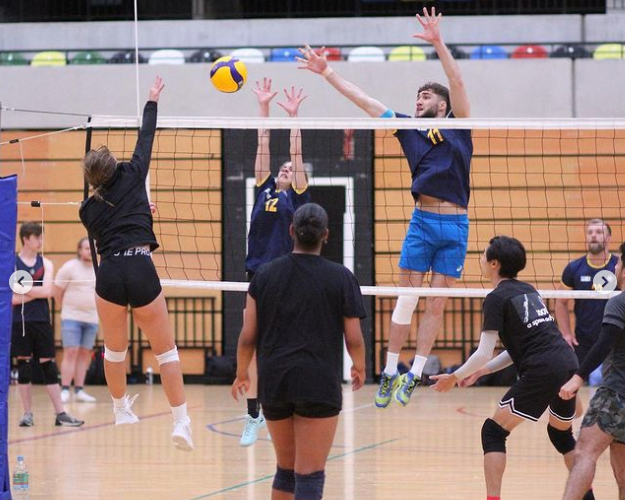
Why Post-College Adults Prioritize Sports and Fitness?
1. Health and Well-Being
As adults, health and well-being take center stage. The desire to stay fit and healthy motivates adults to engage in sports and fitness activities.
2. Stress Management
Adult life comes with its share of stressors. Sports and fitness provide a constructive means of managing stress and maintaining mental clarity.
3. Social Interaction
Participating in sports leagues or fitness classes allows adults to socialize and build connections, fostering a sense of belonging and camaraderie.
4. Lifelong Passion
For many, sports and fitness aren’t just activities; they’re lifelong passions. Adults continue to pursue these interests as a way to indulge in their love for the game.

The Commitment to Lifelong Fitness
Why Sports and Fitness Are for Life?
1. Health Benefits
The health benefits of regular physical activity are well-documented. People of all ages recognize the importance of staying active to prevent chronic diseases and maintain overall well-being.
2. Mental Health
Physical activity is closely linked to mental health. The endorphins released during exercise contribute to improved mood and reduced feelings of anxiety and depression.
3. Social Connections
Throughout life, maintaining social connections remains vital. Sports and fitness activities provide opportunities for social interaction and building friendships.
4. Personal Fulfillment
Engaging in sports and fitness pursuits can be personally fulfilling. Achieving fitness goals and mastering sports skills bring a sense of accomplishment and satisfaction.

Frequently Asked Questions
FAQ – College Intramural Sports and Fitness
1. What are the most popular college intramural sports?
- Basketball, soccer, flag football, and volleyball are among the most popular college intramural sports due to their accessibility and inclusivity.
2. Why do college students play intramural sports?
- College students play intramural sports for social connection, stress relief, competitive spirit, and to maintain their health and fitness.
3. Are there fitness programs for college students beyond intramural sports?
- Yes, many college campuses offer fitness programs, including running clubs and group fitness classes, to cater to various interests and fitness levels.
FAQ – Post-College Adult Sports and Fitness
1. What are the most popular sports and fitness activities for adults after college?
- Running, cycling, golf, tennis, swimming, CrossFit, yoga, and team sports leagues are popular choices for post-college adults.
2. Why do adults continue to prioritize sports and fitness after college?
- Adults prioritize sports and fitness for health and well-being, stress management, social interaction, and as a lifelong passion.
3. Are there opportunities for social interaction through adult sports and fitness programs?
- Yes, many adult sports leagues and fitness classes provide opportunities for social interaction and building friendships.
Conclusion
In the journey from college to adulthood, our choices regarding sports and fitness evolve, reflecting our changing lifestyles, priorities, and interests. College intramurals offer a platform for social connection, stress relief, and competitive spirit, while post-college adults prioritize health, well-being, stress management, and lifelong passions.
One thing remains constant, though: the commitment to sports and fitness throughout life. The physical and mental benefits, social connections, and personal fulfillment they offer make sports and fitness a lifelong pursuit, ensuring that individuals of all ages continue to stay active and engaged in the activities they love.
As you transition through life’s stages, remember that sports and fitness are not just activities; they are companions on your journey to a healthier, happier, and more fulfilling life.
In this comprehensive guide, we’ve explored the evolution of sports and fitness preferences from college to adulthood, answering key questions such as why college students play intramural sports and fitness, why post-college adults continue to prioritize sports and fitness, and what motivates individuals to commit to sports and fitness for life. The transition from college to adulthood brings about changes in lifestyle, priorities, and interests, which influence the choices we make when it comes to staying active and fit. Whether you’re a college student exploring intramural options or an adult seeking lifelong well-being, this guide has provided valuable insights into the world of sports and fitness at different stages of life. Stay active, stay healthy, and enjoy the journey!
During your lifelong sports and fitness journey, please make sure to be safe so you can continue doing what you love. For tips on sports safety and injury prevention, you might want to check out our comprehensive guide on ‘Staying Safe on the Field: Injury Prevention Strategies for Recreational Athletes.’ Click here to read it.

